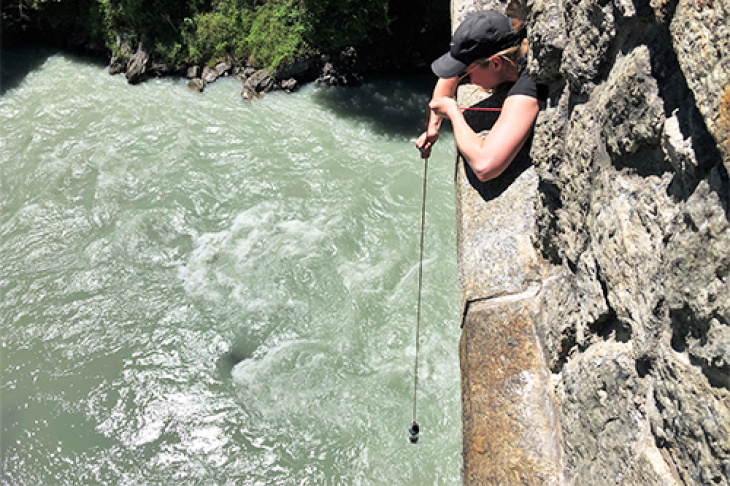Stones for the climate
If climate change causes more rain, this promotes the weathering of rocks and thus the erosion of the soil. The dissolved substances reach the sea via rivers. A new model from Helmholtz-Zentrum Hereon shows: The process has an impact on CO2 storage there. If global emissions of greenhouse gases increase sharply, as they have in the past, this increases the ability to bind them. When emissions are low, the opposite happens. The study looked at the factors that favor sequestration capacity and their effects. It appeared in the journal Nature Communications.
If the cook varies the amount of ingredients when preparing a dish, a completely new taste is created. It is exactly the same with binding of CO2 in the sea - a change in the substances in the water changes everything. The so-called alkalinity, i.e. the acid binding capacity, is created by the weathering of rocks and their entry into the ocean. Increased erosion on land causes an increase in weathering of silicates and carbonates. The researchers identified the factors for more alkalinity using the model: Degree of erosion, area fraction of carbonate, temperatures, catchment size, and soil thickness.
Method and influencing factors

Alkalinity affects the uptake of CO2 and contributes to the long-term buffering capacity of the ocean. Photo: Hereon/ Nele Lehmann
"The model we used is a statistical, not a mechanistic model. We applied it to identify the factors influencing alkalinity based on our compiled data set and to describe their interdependencies," says Nele Lehmann of the Hereon Institute for Carbon Cycles, lead author of the study, which was an international collaboration with the Alfred Wegener Institute Helmholtz-Zentrum für Polar- und Meeresforschung (AWI) and funding from the Deutscher Akademischer Austauschdienst (DAAD).
If warming continues slowly, alkalinity would drop by up to 68 percent by 2100, depending on the watersheds. That means the ocean's ability to sequester CO2 would decrease significantly. Rapidly progressing warming, on the other hand, would lead to higher temperatures and thus more precipitation in temperate climate zones. This would increase alkalinity by up to 33 percent. "But that doesn't mean that more emissions are good for the climate. The impact of alkalinity is small compared to the amounts of man-made CO2 emitted around the world. The process of weathering unfolds its effects over much longer periods of time," Lehmann said.
Climate change is greatly accelerating the interplay of carbon cycling and weathering that is fundamental to the development of life. The team first looked for existing data. The goal was to find as many alkalinity measurements as possible in the immediate vicinity of erosion measurement sites. To do this, the researchers searched databases and publications, and took samples themselves. They conducted the investigation of the alkalinity factors using their new model. The biggest limitation: the erosion rate measurements the researchers used have often only been taken over 20 years, are complex and expensive. This made it difficult to produce the data set. Especially in the higher latitudes, there are hardly any measurements, so the study is limited to the mid-latitudes.
New questions in the Arctic
Next, Lehmann would like to investigate alkalinity and the erosion rate in the Arctic. There, the data situation is patchy. And climate change is clearly being noticeable, so potentially the biggest change in alkalinity flux could also occur. Of particular importance: whether erosion itself is changing as a result of climate change.
Further Information
- Original publication Nele Lehmann, Tobias Stacke, Sebastian Lehmann, Hugues Lantuit, John Gosse, Chantal Mears, Jens Hartmann & Helmuth Thomas
- Website Institute of Carbon Cycles
Contact
Scientist
Phone: +49 (0)4152 87-2859
Institute of Carbon Cycles
Helmholtz-Zentrum Hereon
Press Officer
Phone: +49 (0)4152 87-1648
Communication and Media
Helmholtz-Zentrum Hereon
